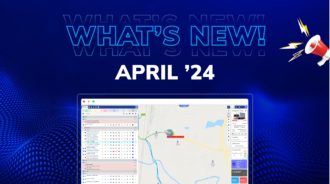In the evolving landscape of educational transportation, driver management solutions are playing a pivotal role. With advancements in technology and the increasing need for efficiency and safety in school transportation, these next-gen solutions are not just an option, but a necessity.
The Need for Advanced Driver Management in Schools
In today’s fast-paced educational environment, schools face numerous challenges in managing their transportation fleets. Advanced driver management solutions are not just a luxury but a critical necessity for ensuring efficiency, safety, and compliance in school transportation.
A. Ensuring Safety and Reliability
1. Enhanced Student Safety: The foremost priority of any school transportation system is the safety of its students. Advanced driver management systems are equipped with features like GPS tracking, real-time speed monitoring, and geofencing. This technology ensures that students are transported in a safe, controlled environment, significantly reducing the risk of accidents.
2. Reliable Driver Monitoring: These solutions offer comprehensive monitoring of driver behavior. By analyzing data on speeding, harsh braking, and erratic driving patterns, schools can ensure that their drivers maintain the highest safety standards. This data also aids in conducting targeted training programs for drivers, further enhancing safety.
B. Streamlining Operations
1. Route Optimization: Advanced systems provide dynamic route planning capabilities. They can analyze traffic patterns, road conditions, and bus capacities to suggest the most efficient routes. This not only saves time but also reduces fuel consumption, contributing to cost savings.
2. Improved Communication: Communication between the school administration, drivers, and parents is crucial. Modern driver management solutions include integrated communication tools that facilitate real-time updates about delays, changes in routes, or emergencies, keeping everyone informed and prepared.
3. Maintenance Alerts: Regular maintenance is vital for the longevity and safety of school buses. Advanced management systems can predict maintenance needs and schedule alerts. This proactive approach prevents unexpected breakdowns and ensures that the fleet remains in optimal condition.
C. Compliance and Reporting
1. Regulatory Compliance: Schools must adhere to various transportation regulations. Driver management solutions help in maintaining compliance with these regulations by monitoring driver hours, ensuring vehicle safety standards, and keeping accurate logs.
2. Data-Driven Decision Making: The ability to collect and analyze transportation data is invaluable. Schools can use this data to make informed decisions about their transportation policies, driver training programs, and budget allocations.
D. Enhanced Parental Trust and Satisfaction
1. Building Trust: By adopting advanced driver management solutions, schools demonstrate their commitment to student safety and efficiency. This builds trust among parents, who can be assured of their children’s safety.
2. Parent Engagement: Many systems offer dedicated parent portals or apps that provide real-time tracking of buses and communication with the school transportation department. This level of engagement and transparency significantly enhances parental satisfaction.
The Role of Fleet Management Software in School Transportation
Fleet management software plays a crucial role in revolutionizing school transportation. This advanced technology is not only about vehicle tracking but encompasses a wide range of features that contribute to efficient and safe school commutes.
A. Real-Time Monitoring and Reporting
1. GPS Vehicle Tracking: The core of fleet management software is its GPS tracking capability. It allows schools to monitor the real-time location of their buses. This is essential for ensuring that routes are adhered to and for responding promptly to any deviations or emergencies.
2. Performance Analytics: These systems provide detailed analytics on vehicle performance. Schools can monitor fuel efficiency, average speed, idling times, and other vital metrics. This data is invaluable for optimizing fleet operations and reducing operational costs.
3. Driver Behavior Analysis: Monitoring driver behavior is a key aspect. The software can track speeding, harsh braking, and sharp turns, ensuring that drivers adhere to safe driving practices. This not only ensures student safety but also extends the life of the vehicles.
B. Maintenance and Safety
1. Preventive Maintenance Scheduling: One of the standout features of fleet management software is its ability to schedule preventive maintenance. This includes regular checks and servicing of vehicles, which is crucial for ensuring they are always in top condition, reducing the risk of breakdowns and accidents.
2. Safety Compliance: The software helps in maintaining compliance with safety regulations. It can keep track of necessary safety checks and certifications, ensuring that every vehicle in the fleet meets the required safety standards.
3. Emergency Response Management: In case of an emergency, such as a breakdown or an accident, the software can provide immediate alerts. It can also guide the school in coordinating a swift response, whether it’s dispatching another vehicle, informing parents, or contacting emergency services.
C. Eco-friendly Operations
1. Reducing Carbon Footprint: With environmental concerns on the rise, fleet management software aids in adopting more eco-friendly practices. It can optimize routes for fuel efficiency, suggest eco-driving practices, and even help in transitioning to electric buses.
2. Monitoring and Reducing Emissions: The software can monitor emission levels, helping schools to stay within environmental compliance and contribute to a greener planet.
D. Parental and Staff Communication
1. Enhancing Communication: The integration of communication tools in the software allows for seamless interaction between the school, drivers, and parents. Real-time updates on bus locations, delays, and arrival times keep everyone informed and reduce anxiety and confusion.
2. Feedback Mechanism: Some fleet management systems include a feedback mechanism where parents and school staff can provide input on the transportation service. This feedback is valuable for continuous improvement and maintaining high satisfaction levels.
Trends in Driver Management Solutions
A. Automation and AI
The incorporation of AI and automation in driver management is a significant trend. It includes automated route planning, predictive maintenance, and even AI-powered safety measures like driver fatigue detection.
B. Eco-friendly Initiatives
With a global push towards sustainability, eco-friendly solutions in school transportation are gaining traction. Electric buses and eco-driving behavior monitored by management solutions are examples of this trend.
Transitioning to Next-Gen Solutions
Transitioning to advanced driver management solutions is not just about adopting new technology; it’s about embracing a culture of safety, efficiency, and sustainability.
A. Training and Adaptation
Implementing new solutions requires adequate training for staff and drivers. Familiarization with the software and new protocols is essential for a smooth transition.
B. Parental Involvement
Keeping parents informed and involved in the transportation system enhances trust and cooperation. Modern solutions offer apps and interfaces for parents to stay updated.
Conclusion
The shift to next-gen driver management solutions in school transportation is not just a step but a leap towards a safer, more efficient, and sustainable future. Embracing these advanced solutions is imperative for schools to keep up with the demands of modern education logistics.



